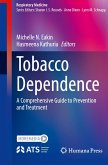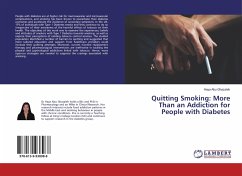Previous research shows that cigarette smoking is highly prevalent in people diagnosed with depression and that depressives experience difficulties quitting. Therefore, the aim of this thesis was to investigate the role of depressive symptoms in maintaining tobacco use in currently depressed smokers. Interviews with depressed smokers revealed three types of smoking: habitual, addiction and management of depressive symptoms.The latter was maintained by:lack of self-reinforcement, helplessness and negative thoughts.Analyses of minimally deprived depressed and non-depressed smokers expired carbon monoxide, smoking topography and cardiovascular responses to smoking one cigarette every 30 minutes, found few group differences suggesting that they obtain similar nicotine levels. Both groups demonstrated improved positive mood after smoking. Additionally depressives displayed enhanced psychomotor function and transient reduction of positively reinforced craving. It was concluded that smoking increases appetitive behaviours in depressives that may overcome motivational deficits.








